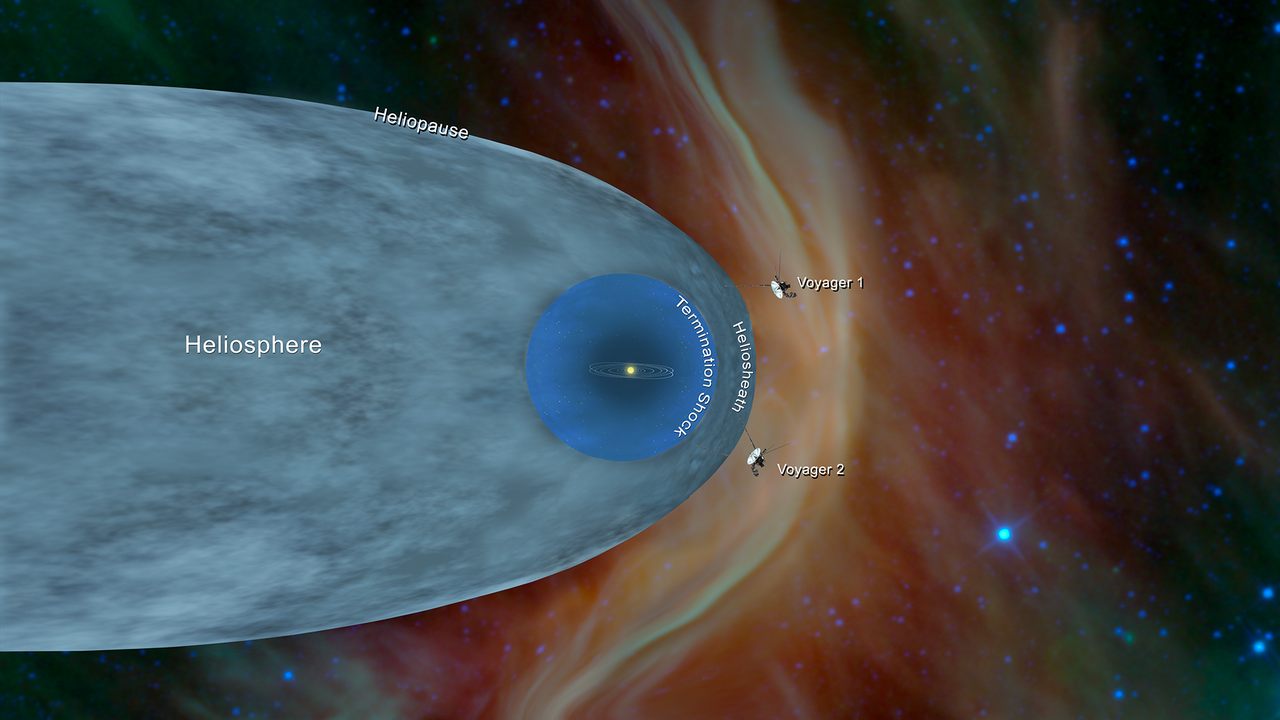FP TrendingMay 12, 2021 17:11:46 IST
The plasma wave system in the National Aeronautics and Space Administration’s (NASA) Voyager 1 spacecraft has detected a humming sound in interstellar space. Scientists believe that the sound is caused by the small amounts of gas that is present in space. This faint monotonous hum represents the background noise present in the expanse between star systems. Identified at radio frequencies in a narrow bandwidth, these persistent plasma waves were detected from 2017.
Launched 44 years ago by NASA on 5 September 1977, Voyager 1 is part of the Voyager program to study the outer Solar System. It was launched 16 days after its twin, Voyager 2 launched. Voyager 1 crossed into interstellar space in August 2012 and continues to collect data. It is providing scientists with observations of “truly uncharted territory” and help them understand the “very nature of energy and radiation in space”.

This graphic shows the position of NASA’s Voyager 1 and Voyager 2 probes, outside of the heliosphere, a protective bubble created by the Sun that extends well past the orbit of Pluto. Image credit: NASA
According to the Cornell Chronicle, the research which was published in Nature Astronomy on 10 May allows scientists to determine how interstellar medium interacts.
The interstellar medium has turbulent waves and the crashing waves give us clues about its density. Aspects like the shape of the heliosphere, star formation, and our location in the galaxy are determined by the density of the interstellar medium
Speaking about their findings, the lead author of the study Stella Koch Ocker said that there is more low-level activity in the interstellar gas than scientists had previously thought. Stella called the research a testament to Voyager 1. The spacecraft is engineering’s gift to science that keeps on giving. Stella is a doctoral student in astronomy at Cornell University.
Shami Chatterjee, another researcher involved with the study said that the voyager is sending back details regardless of what the sun was doing. He added that now, in order to measure interstellar plasma, they do not need a fortuitous event related to the sun.










